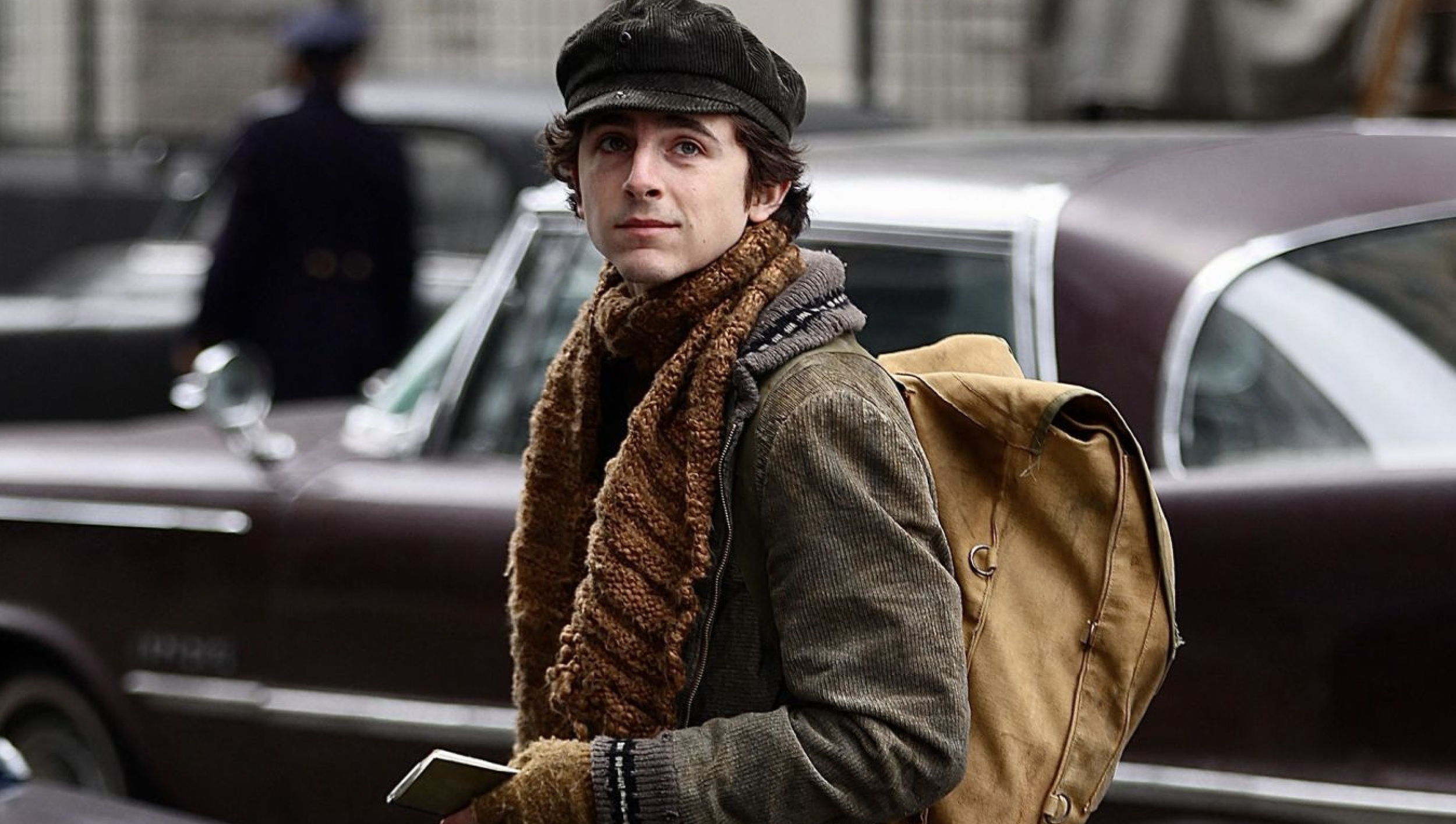A 19-year-old boy drops out of college and travels from St. Louis County, Minnesota, to New York City with a guitar and a case of harmonicas. That same night, he has his first gig at Cafe Wha?---a club described as “a subterranean cavern, liquorless, and ill-lit.” A few days later, he visits his folk idol, Woody Guthrie, in New Jersey, where he sings some of Guthrie's songs. Introducing himself as Bob Dylan, he becomes a star. Dylan is called the “voice of a generation,” and he goes on to change the future of folk music.
When the Bob Dylan biopic, James Mangold’s A Complete Unknown, was announced, the reaction was largely positive. With Timothée Chalamet cast to play Dylan, the buzz surrounded the actor's ability to capture such a complex and enigmatic persona.
Since its release, A Complete Unknown has hit a new box office milestone, already grossing over $110 million in the United States. It has received eight Oscar nominations including Best Picture, Best Director, and Best Actor (Chalamet).
The film focuses on Dylan’s rise to fame and his controversial switch from acoustic to electric guitar in the mid-‘60s, most notably his performance at the 1965 Newport Folk Festival.
At this major moment in music history, Dylan originally planned to play acoustic guitar and sing his folk songs “Mr. Tambourine Man” and “It’s All Over Now, Baby Blue,” which captured the world. Instead, when his stage time came, he was joined by an electric backup band, played an electric guitar, and after three songs from his new Highway 61 record, he left the stage.
The film captures this event well, portraying a monumental switch in Dylan's career. Audience response played a large part in this scene: some boo him off the stage, begging for folk and roaring in anger at Dylan’s betrayal of the festival, while others enjoy the rock and roll twist.
After defying the festival rules, Dylan goes on to release more than 50 albums, writing more than 600 songs. He was notably the first musician to win a Nobel Prize in Literature for his songwriting. While some booed his new releases, stuck in the dying past, Dylan represented youth and the future. He used his music to support social causes like civil rights, antiwar, and individual freedom, with some notable songs being “The Times They Are a-Changin’,” “Takin’ World War III Blues,” and “Blowin’ in the Wind.” He greatly popularized protest songs, owing his success, in part, to Black musicians and civil rights activists, and became a quintessential protest singer.
While there’s no doubt the film introduced the greatness of Dylan to a younger generation, some older fans argue that it should not have taken a Hollywood biopic to spark mainstream conversations about his impact.
According to Billboard, Dylan’s music is getting more streams, and folk music is making a comeback in popularity. Artists of the ‘60s and ‘70s are climbing charts again, and Joan Baez, whose relationship with Dylan is covered in the film, is also gaining listeners. New and old fans are buying brown leather jackets and hiding their hands in their pockets to emulate the cover of Dylan’s first record, The Freewheelin’ Bob Dylan and his signature ‘70s-shaped Ray-Bans are selling for hundreds of dollars. It is impossible to frame Bob Dylan in any other way than as a legendary songwriter and musician, yet the film has renewed the spotlight on him—though some argue it never faded. This is a point of contention between new and old fans.
Older Dylan fans acknowledge his early breakthroughs in songwriting. His switch to electric elevated folk rock, and paved the way for a new subgenre. His refusal to stick to a sound that had already been played for years pushed the music industry forward, with artists looking to defy the expectations placed upon them as Dylan did. His new subgenre of “psychedelic rock” greatly inspired the Beatles to release music that redefined the possibilities of production techniques, lyrics, and eclectic sound, and pushed other musicians such as David Bowie and Madonna to form liberated personas.
Dylan’s free and creative attitude resonated with listeners in the ‘60s and continues to speak to people who are fighting for change and defying societal norms.
The film sparks a new conversation about modern music, inspiring millions to explore the rock and roll culture of the ‘60s-‘70s. Who knows? Maybe the next Bob Dylan has just left the theater, returning home to an acoustic guitar, ready to write a future “Like a Rolling Stone.”
